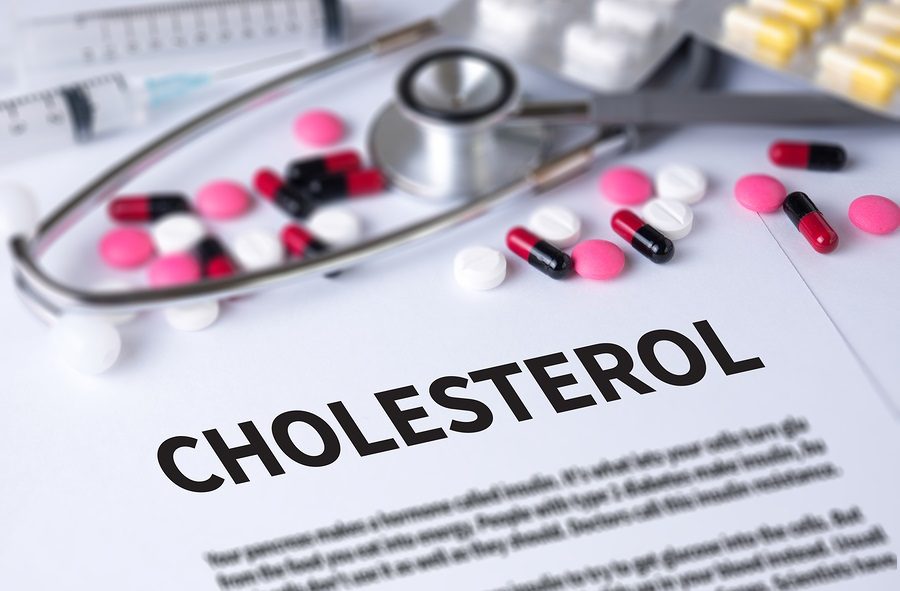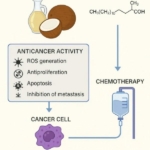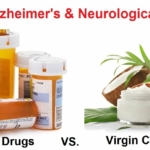I have always enjoyed having medical students in my office as I like teaching.
This week, I had a pleasant 4th year medical student, Andrea. The first day Andrea showed up to my office, I handed her a New England Journal of Medicine (NEJM) article about statin drugs.[i]
This is an important article that gave statin drugs the indication to use in a healthy population. I asked her to explain how the authors of the article came to their conclusions and I requested that she do her own statistical analysis and report back to me.
When I reviewed the article with Andrea I showed her a different way to look at and dissect the article.
Specifically, I pointed out how the conclusions in the article are not supported by the data in the paper. I performed a statistical analysis with Andrea showing her that the article’s data revealed that the drug failed nearly 99% who took it even though the main stream media ridiculously reported a 50% improvement in cardiovascular outcomes.
In my book, The Statin Disaster, I discuss the failure of statins for the vast majority who takes them.
For years I have used this article for teaching purposes as it shows how the Big Pharma Cartel makes statin drugs appear to be beneficial when they are not.
The next day, I handed Andrea another NEJM article[ii] and told her we would do the same thing. My goal is to teach Andrea and other medical students how to properly analyze a study and come to their own conclusions about whether a drug or therapy is beneficial.
The second article was about Repatha. Repatha is a new cholesterol-lowering medication that works differently from statins. It is part of an expensive class of medications that currently costs about $14,000 per year.
When Repatha first came out I predicted that this class of drugs would (similarly to statins) fail and, furthermore, cause too many adverse effects.
When we reviewed the article, we concluded Repatha was not very effective as it failed to help nearly 98% who took it. As we were about to finish our discussion, I said let’s look at the adverse effects from this drug.
I flipped the page to find Table 3:
 This was the first time I had looked at Table 3 even though I had read the article many times. I commented to Andrea,
This was the first time I had looked at Table 3 even though I had read the article many times. I commented to Andrea,
“Look at the adverse event numbers and look at the serious adverse event numbers.”
(This information appears in the first two rows above.)
Since the Chart is difficult to see, here’s what is in the first two rows: Adverse side effects were encountered by 77.4% of those treated with both Repatha and the placebo.
As for serious side effects, 24.8% of the Repatha group and 24.7% of the placebo group suffered a serious adverse effect.
We were both stunned.
How could a therapy have such a high rate of adverse effects, especially serious adverse effects? And, how could a placebo have such a high rate of adverse and serious adverse events? (One question that immediately comes to mind is what the heck is in the placebo? That will be coming soon.)
Next, I looked up what the authors classified as adverse events and serious adverse effects. [iii]
“An adverse event is defined as any untoward medical occurrence in a clinical trial subject.”
A serious adverse event was defined by the following:
“A serious adverse event is defined as an adverse event that meets at least one of the following serious criteria:”
- fatal
- life threatening (places the subject at immediate risk of death)
- requires in-patient hospitalization or prolongation of existing hospitalization
- results in persistent or significant disability/incapacity
- congenital anomaly/birth defect
- other medically important serious event
So, nearly one in four who either took the drug Repatha or a placebo suffered a serious adverse event that includes all the conditions in the bullet points above.
Who would ever take a drug (or a placebo) that is associated with that many serious adverse events?
And, what is in the placebo that is causing so many problems? I thought a placebo was defined as a substance that has no therapeutic effect and is used as a control when testing a drug in order to ascertain if there are any adverse effects from the drug.
But, what do I know?
In fact, this study should have never been published since it did not contain a true placebo—an inert substance that causes no physiologic response. This study was rigged by Big Pharma in order to minimize the side effects from Repatha. Since the side effect profile between the treatment (Repatha) group and the “placebo” group were similar, the authors concluded,
“There was no significant difference between the study groups with regard to adverse events…”
Based on my findings, I will be calling for the article to be retracted. However, I will not be holding my breath.
Finding out what was in the placebo in the Repatha study was not fun. It was irritating as it was not reported in the original article. The article refers to a Supplemental Appendix for further information. Finding the index and going through it took an inordinate amount of time. More irritations.
However, find it I did on page 49 out of 574 mind-numbing, soul-crushing pages.[iv]
The placebo was described here:
“Respective placebo will be presented in an identical prefilled AI/Pen containing a 1.0 mL deliverable volume of 1.1% (w/v) sodium carboxymethylcellulose, 250 mM proline, 10 mM acetate, and 0.01% (w/v) polysorbate 20, pH 5.0 or in an identical Personal Injector containing a 3.5 mL deliverable volume of 0.7% (w/v) sodium carboxymethylcellulose, 250 mM proline, 10 mM acetate, and 0.01% (w/v) polysorbate 20, pH 5.0.”
The Repatha drug part of the study (the treatment group) was described as:
“Each sterile vial is filled with a 1-mL deliverable volume of 70 mg/mL AMG 145 formulated with 10 mM sodium acetate, 9% (w/v) sucrose, 0.004% (w/v) polysorbate 20, pH 5.2.”
So, what could be causing all those serious adverse effects? It must be something in both the placebo and the Repatha groups.
I would put my money on polysorbate as it is found in both groups. It is a toxic substance that has no place in any medicine.
Polysorbate is also used in vaccines in the form of Polysorbate 80. The difference between polysorbate 20 and 80 refers to the size of the fatty acid chain. Polysorbate 80, found in many vaccines, is more soluble in lipids than polysorbate 20. Both are widely used in medicine as an emulsifier or defoamer to help the drug disperse.
For polysorbate 20, the Material Safety Data Sheet (MSDS) states,
“The toxicological effects of Polysorbate 20 have not been thoroughly studied.”[v]
Furthermore, Polysorbate 20 has been investigated as a tumorigenic (promotes tumors) and reproductive effector (adverse effect of a harmful chemical that interferes with the reproductive organs of an organisms). In Section 2 of the MSDS for polysorbate 20 it states for target organs,
“No data available.”
Later in this section, in regard to signs and symptoms of exposure to Polysorbate 20 the MSDS states,
“To the best of our knowledge, the toxicological properties have not been thoroughly investigated.”
Under medical conditions generally aggravated by exposure it states,
“No data available.”
For personal protection exposure:
“No data available.”
Toxicological information:
“The toxicological effects of this product have not been thoroughly studied.”[vi]
Gee, that sounds like a product that I would like injected into me. (I said that with strong sarcasm.)
Repatha should be avoided. In fact, it should be pulled from the market. If your doctor prescribes Repatha ask him/her to explain the 25% serious adverse effects associated with it. Please let me know what you hear.
In part II of this article, I will describe the toxicity of polysorbate 80, which is similar to polysorbate 20. Polysorbate 80 is found in many vaccines.
~Dr B
Read the full article at DrBrownstein.com.
Comment on this article at HealthImpactNews.com.
References
[i] https://www.nejm.org/doi/full/10.1056/NEJMoa0807646
[ii] https://www.nejm.org/doi/full/10.1056/NEJMoa1615664
[iii] https://www.nejm.org/doi/suppl/10.1056/NEJMoa1615664/suppl_file/nejmoa1615664_protocol.pdf
[iv] https://www.nejm.org/doi/suppl/10.1056/NEJMoa1615664/suppl_file/nejmoa1615664_protocol.pdf
[v] https://www.caymanchem.com/msdss/583151m.pdf
[vi] https://www.caymanchem.com/msdss/583151m.pdf




 Research Continues to Show Virgin Coconut Oil's Effectiveness in Treating Cancer
Research Continues to Show Virgin Coconut Oil's Effectiveness in Treating Cancer Coconut Oil Continues to Benefit Alzheimer's Patients over Drugs as Studies Continue for Neurological Benefits
Coconut Oil Continues to Benefit Alzheimer's Patients over Drugs as Studies Continue for Neurological Benefits How the Simple High-Fat Low-Carb Ketogenic Diet Continues to Change People's Lives
How the Simple High-Fat Low-Carb Ketogenic Diet Continues to Change People's Lives New Studies Continue to Show that Coconut Oil is the Best Oil for Treating Skin Conditions and Maintaining Healthy Skin and Teeth
New Studies Continue to Show that Coconut Oil is the Best Oil for Treating Skin Conditions and Maintaining Healthy Skin and Teeth New Study Confirms Health Benefits of Coconut Oil and USDA False Claims Against It
New Study Confirms Health Benefits of Coconut Oil and USDA False Claims Against It